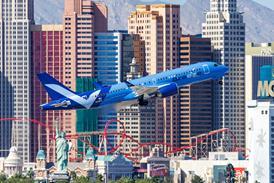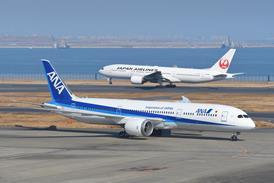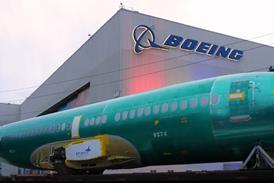"Cautious optimism" was the buzz phrase at this year's NBAA show, but are manufacturers just working themselves up for further disappointment?
Manufacturer after manufacturer stood up at last week's US National Business Aviation Association show in Orlando, Florida, and said they saw signs of recovery in the depressed market. And the traditional weather-vanes of recovery - used aircraft availability and prices - seem to be pointing towards a gradual lifting of the gloom, but there have been several false dawns since this industry began its slide into recession in 2001. "Cautious optimism" was the most often-heard phrase at NBAA this year.
One reason for both the optimism and the caution is the impact on the US market of the so-called "bonus depreciation" tax break that was part of President Bush's economic stimulus package. This allows buyers to depreciate over half the value of a new aircraft in the first year, and it appears to be achieving its aim of stimulating sales of business aircraft. Several manufacturers credit the tax break with tipping the scales in favour of new aircraft purchases.
But the mini-boom created by bonus depreciation could fade all too fast, and well before the underlying economic recovery has reached the point where sales begin to soar again. To qualify for the tax break, the buyer must take delivery of the aircraft by the end of 2004. Because of the months-long build time for a business jet, even in today's order-starved times, the window of opportunity could already be closing, leaving the industry with no sales incentive to see it through 2004 and into 2005, and into the recovery foreseen by several forecasters.
While industry groups are lobbying Congress to extend bonus depreciation and help the industry get through 2004, business-aircraft manufacturers are not sitting idly by. This is an industry with a reputation for fighting its way out of recession by stimulating demand with new product launches. And although this year's was not a vintage show for launches by the standards of past NBAAs, the introduction of a number of derivatives was rewarded with an upswing in interest. Raytheon, for example, is looking at raising the rates on its hard-hit Beechcraft King Air production line based on customer reaction to the new Rockwell Collins Pro Line 21 integrated flightdeck unveiled at the show.
No sector of aviation seems immune to the industry's cycles. Business aviation thought it might be, this time around, thanks to the growth of fractional ownership. But while the fractionals have brought the business aircraft ownership experience to a far wider range of customers, those new buyers have proved just as vulnerable to the vagaries of Wall Street as the traditional customers, corporate flight departments. Fractionals have softened the downturn slightly, however, and their continued, but slower growth is a key element of the forecasts for a recovery in 2005.
By the time the next cycle hits - and it would be foolhardy to assume there will not be another cycle - the industry hopes to have reduced its susceptibility further. By then, the new class of entry-level jets will be firmly established, as will new ways of bringing business-aircraft travel to an even wider audience. The latter includes the club card programmes that are just beginning to make their impact felt. These are a way to make business aviation more affordable by reselling blocks of flying hours in fractionally owned aircraft to club members. Card buyers get the quality and safety of flying with a major fractional operator without the need to make a capital investment.
But even card programmes will not make business aviation a mass market. That hope lies with the new generation of microjets, led by the Eclipse 500 and Cessna Citation Mustang. The belief is that these aircraft, with prices far less than today's $4 million entry-level jets, will add hundreds of deliveries a year to the industry's totals. But these numbers will only materialise if the new microjets succeed in creating an air-taxi market that brings the comfort and convenience of business aviation to the travelling public.
Despite the attraction of being able to exchange the inconvenience of airline hub-and-spoke travel for the comfort of point-to-point flying in a four- to six-seat jet, it would be fair to say the majority of attendees at this year's NBAA remain sceptical about the feasibility of the air-taxi market. And without the outlet of a new market, the viability of those light jet programmes predicated on high production volumes has to be open to question. But as the fractional and card programmes demonstrate, this is not an industry that is afraid to innovate. And who is to say what direction the fractional juggernaut will take in the long run, when it has hundreds of aircraft criss-crossing the country?
Source: Flight International























